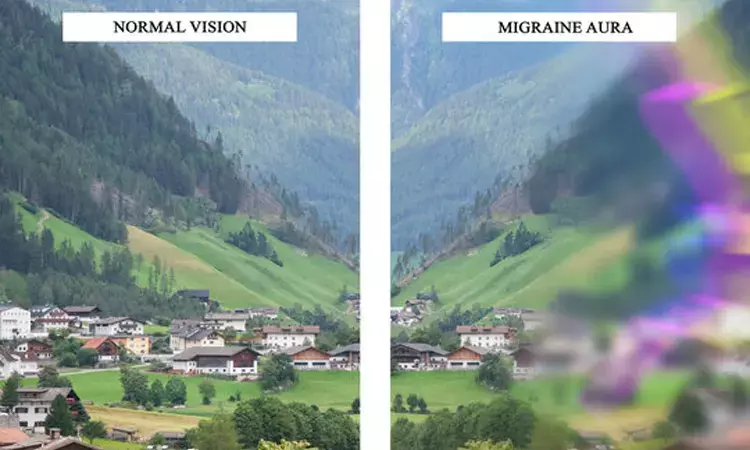- Home
- Medical news & Guidelines
- Anesthesiology
- Cardiology and CTVS
- Critical Care
- Dentistry
- Dermatology
- Diabetes and Endocrinology
- ENT
- Gastroenterology
- Medicine
- Nephrology
- Neurology
- Obstretics-Gynaecology
- Oncology
- Ophthalmology
- Orthopaedics
- Pediatrics-Neonatology
- Psychiatry
- Pulmonology
- Radiology
- Surgery
- Urology
- Laboratory Medicine
- Diet
- Nursing
- Paramedical
- Physiotherapy
- Health news
- Fact Check
- Bone Health Fact Check
- Brain Health Fact Check
- Cancer Related Fact Check
- Child Care Fact Check
- Dental and oral health fact check
- Diabetes and metabolic health fact check
- Diet and Nutrition Fact Check
- Eye and ENT Care Fact Check
- Fitness fact check
- Gut health fact check
- Heart health fact check
- Kidney health fact check
- Medical education fact check
- Men's health fact check
- Respiratory fact check
- Skin and hair care fact check
- Vaccine and Immunization fact check
- Women's health fact check
- AYUSH
- State News
- Andaman and Nicobar Islands
- Andhra Pradesh
- Arunachal Pradesh
- Assam
- Bihar
- Chandigarh
- Chattisgarh
- Dadra and Nagar Haveli
- Daman and Diu
- Delhi
- Goa
- Gujarat
- Haryana
- Himachal Pradesh
- Jammu & Kashmir
- Jharkhand
- Karnataka
- Kerala
- Ladakh
- Lakshadweep
- Madhya Pradesh
- Maharashtra
- Manipur
- Meghalaya
- Mizoram
- Nagaland
- Odisha
- Puducherry
- Punjab
- Rajasthan
- Sikkim
- Tamil Nadu
- Telangana
- Tripura
- Uttar Pradesh
- Uttrakhand
- West Bengal
- Medical Education
- Industry
Migraine may increase risk of all types of retinal artery occlusion: Study

Researchers have recently observed that migraine is associated with increased risk of all types of retinal artery occlusion (RAO) and migraine with aura is associated with increased risk of RAO compared with migraine without aura, as published in the American Journal of Ophthalmology.
Based on theories and pathophysiology of a retinal migraine, precipitating factors for a retinal migraine are same for a migraine, with and without aura. Factors include, but are not limited to, emotional stress, high blood pressure, and hormonal contraceptive pills, as well as exercise, being at a higher altitude, dehydration, smoking, low blood sugar, and hyperthermia. Co-morbidity with lupus, atherosclerosis, and sickle cell disease increase the risk of having a retinal migraine.
Hence, Ahmad Al-Moujahed and colleagues from the Byers Eye Institute, Horngren Family Vitreoretinal Center, Stanford University School of Medicine Department of Ophthalmology, Palo Alto, California conducted this study to determine if migraine is associated with increased risk of retinal artery occlusion (RAO).
The authors carried out a retrospective cohort study on a total of 418,965 patients with migraine and matched controls without migraine. Cox proportional hazard regression models were used to investigate the association between migraine and risk of all RAO, central RAO (CRAO), branch RAO (BRAO), and "other" RAO, which includes transient and partial RAO. The main outcome measures were the occurrence of all RAO, including CRAO, BRAO, and other RAO, following first migraine diagnosis.
The results were-
a. Among the 418,965 patients with migraine, 1,060 (0.25%) were subsequently diagnosed with RAO, whereas only 335 (0.08%) of the patients without migraine were diagnosed with RAO.
b. The hazard ratio (HR) for incident all RAO in patients with migraine compared with those without migraine was 3.48 (95% Confidence Interval (CI): 3.07 - 3.94; P <0.0001].
c. This association was consistent across all types of RAO, including CRAO (HR = 1.62; 95% CI: 1.15 - 2.28; P=0.004) BRAO (HR 2.09; 95% CI 1.60 - 2.72; P <0.001), and other types of RAO (HR 4.61; 95% CI 3.94 - 5.38; P <0.001).
d. Patients with migraine with aura had a higher risk for incident RAO compared with those with migraine without aura (HR = 1.58; 95% CI: 1.40 - 1.79; P <0.001). e. This association was consistent for BRAO (HR = 1.43; 95% CI 1.04 - 1.97; P <0.03) and other types of RAO (HR = 1.67; 95% CI 1.45 - 1.91; P <0.001), but was not statistically significant for CRAO (HR = 1.18; 95% CI 0.75 - 1.87; P = 0.475). f. Significant risk factors for this association included increased age, male sex, acute coronary syndrome, valvular disease, carotid disease, hyperlipidemia, hypertension, retinal vasculitis and/or inflammation, and systemic lupus erythematosus.
Hence, it was concluded that "migraine is associated with increased risk of all types of RAO and migraine with aura is associated with increased risk of RAO compared with migraine without aura."
Dr. Nandita Mohan is a practicing pediatric dentist with more than 5 years of clinical work experience. Along with this, she is equally interested in keeping herself up to date about the latest developments in the field of medicine and dentistry which is the driving force for her to be in association with Medical Dialogues. She also has her name attached with many publications; both national and international. She has pursued her BDS from Rajiv Gandhi University of Health Sciences, Bangalore and later went to enter her dream specialty (MDS) in the Department of Pedodontics and Preventive Dentistry from Pt. B.D. Sharma University of Health Sciences. Through all the years of experience, her core interest in learning something new has never stopped. She can be contacted at editorial@medicaldialogues.in. Contact no. 011-43720751
Dr Kamal Kant Kohli-MBBS, DTCD- a chest specialist with more than 30 years of practice and a flair for writing clinical articles, Dr Kamal Kant Kohli joined Medical Dialogues as a Chief Editor of Medical News. Besides writing articles, as an editor, he proofreads and verifies all the medical content published on Medical Dialogues including those coming from journals, studies,medical conferences,guidelines etc. Email: drkohli@medicaldialogues.in. Contact no. 011-43720751


